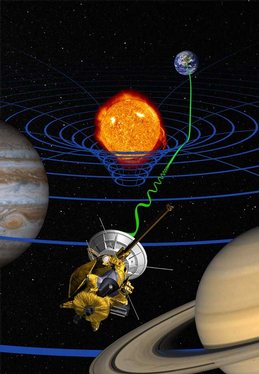
- Order:
- Duration: 0:16
- Published: 09 Jul 2009
- Uploaded: 20 Aug 2010
- Author: wolframmathematica




































A general form of the time-delay differential equation for is : where represents the trajectory of the solution in the past. In this equation, is a functional operator from to
::
with given initial condition . Then the solution on the interval is given by which is the solution to the inhomogeneous initial value problem
::,
with . This can be continued for the successive intervals by using the solution to the previous interval as inhomogeneous term. In practice, the initial value problem is often solved numerically.
::,
i.e., , where we picked to fit the initial condition . Similarly, for the interval we integrate and fit the initial condition to find that where .
:Introduce to get a system of ODEs ::
:is equivalent to ::
:where ::
The roots λ of the characteristic equation are called characteristic roots or eigenvalues and the solution set is often referred to as the spectrum. Because of the exponential in the characteristic equation, the DDE has, unlike the ODE case, an infinite number of eigenvalues, making a spectral analysis more involved. The spectrum does however have a some properties which can be exploited in the analysis. For instance, even though there are an infinite number of eigenvalues, there are only a finite number of eigenvalues to the right of any vertical line in the complex plane.
This characteristic equation is a nonlinear eigenproblem and there are many methods to compute the spectrum numerically. In some special situations it is possible to solve the characteristic equation explicitly. Consider, for example, the following DDE: : The characteristic equation is : There are an infinite number of solutions to this equation for complex λ. They are given by :, where is the kth branch of the Lambert W function.
This text is licensed under the Creative Commons CC-BY-SA License. This text was originally published on Wikipedia and was developed by the Wikipedia community.
